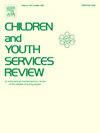Prevalence of grooming and sexting among Portuguese youth: Adaptation of the Questionnaire for Online Sexual Solicitation and Interactions with Adults and Sexting Questionnaire
IF 2.4
2区 社会学
Q1 FAMILY STUDIES
引用次数: 0
Abstract
Background
Online grooming is a type of victimization that is related to sexting behaviors and hurts youth. Research shows a high prevalence of online grooming victimization and sexting behaviors.
Objectives
This study aims to analyze the Portuguese version of the Questionnaire for Online Sexual Solicitation and Interactions with Adults (QOSSIA) and Sexting Questionnaire (SQ) factor structure and psychometric properties; assess the relationship between the QOSSIA and sexting, sexual victimization, and positive emotions; and to assess the prevalence of online grooming victimization and sexting among Portuguese youth.
Methods
The sample comprised 172 adolescents between 12 and 17 years old (M = 15.84, SD = 1.13), of which 101 were girls (58.7 %) and 71 were boys (41.3 %).
Results
QOSSIA and SQ show good internal consistency and an adequate model fit. Positive correlations were identified between QOSSIA, sexting, and sexual victimization. Negative correlations were identified between QOSSIA and positive emotions. Seventy-two youths reported at least one online grooming solicitation during the past year.
Conclusions
This is the first Portuguese version of the QOSSIA and SQ. The QOSSIA and the SQ allow the assessment of online grooming and sexting, contributing to identifying youth victimization and developing multicultural research. According to our study, the prevalence of online grooming victimization and sexting behaviors among Portuguese youth is high. These findings highlight the importance of assessing and addressing these issues in youth interventions.
求助全文
约1分钟内获得全文
求助全文
来源期刊

Children and Youth Services Review
Multiple-
CiteScore
6.30
自引率
6.10%
发文量
303
期刊介绍:
Children and Youth Services Review is an interdisciplinary forum for critical scholarship regarding service programs for children and youth. The journal will publish full-length articles, current research and policy notes, and book reviews.
 求助内容:
求助内容: 应助结果提醒方式:
应助结果提醒方式:


